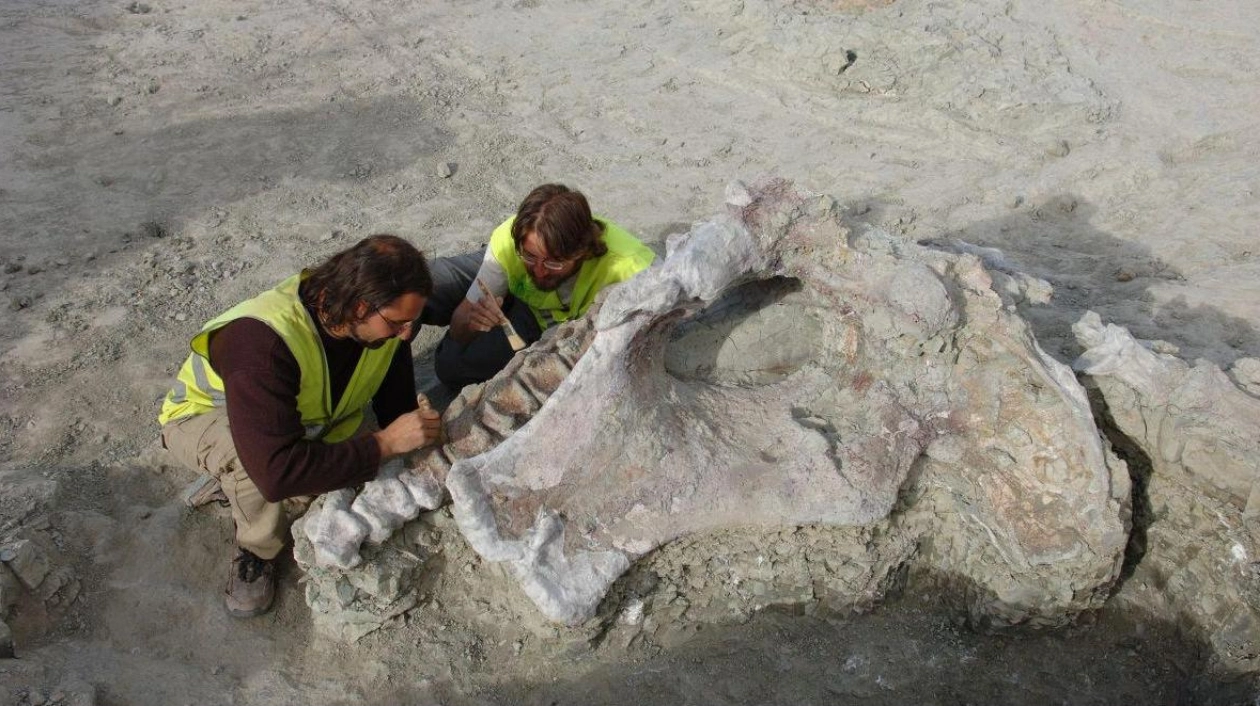In 2007, while constructing the Madrid-Levante high-speed railway line, fossils were unearthed of one of the last colossal creatures to roam Europe before the extinction of the dinosaurs. The newly identified species, Qunkasaura pintiquiniestra, inhabited the Iberian Peninsula 73 million years ago.
Qunkasaura is a sauropod dinosaur that thrived on the Iberian Peninsula during the Upper Cretaceous period. The discovery reveals that this dinosaur lived and perished in Cuenca. It likely belonged to a broader group distributed across the Iberian Peninsula, with ties to other sauropod dinosaurs found in European and Asian regions, according to Pedro Mocho.
Mocho, a Portuguese paleontologist from the University of Lisbon's Dom Luiz Institute, is part of the team that made this discovery, published in the journal Communications Biology. The new species belongs to the sauropod group, characterized by their large size, long necks, and tails, and herbivorous diet, which are uncommon in other parts of Europe.
Qunkasaura pintiquiniestra is notable for being one of the most complete sauropod skeletons found in Europe. The Lo Hueco site yielded cervical, dorsal, and caudal vertebrae, parts of the pelvic girdle, and limb elements. This specimen, estimated to be around 15 meters long and weighing approximately ten tonnes, stood about three meters tall at the shoulder.
The presence of this specimen at Lo Hueco suggests that this and other species may have migrated between continents. The Iberian Peninsula, during that era, was an island connected to the southern part of France, known as the Ibero-Armorican island. In such island environments, species often evolve to smaller sizes due to limited resources.
Mocho posits that Qunkasaura likely migrated from Asia to the Iberian Peninsula rather than evolving there. The territory already housed endemic groups, some over 20 million years old, which lived in isolation. This new lineage is related to species from Asia and North America, indicating that these groups likely traveled through Eastern Europe to reach the Ibero-Armorican island.
The name Qunkasaura pintiquiniestra draws from geographical and cultural references near the Lo Hueco deposit. 'Qunka' refers to the ancient etymology of the Cuenca and Fuentes area, 'Saura' honors the Spanish painter Antonio Saura, and 'pintiquiniestra' alludes to a character from Miguel Cervantes' 'Don Quixote de la Mancha'. Parts of the dinosaur's skeleton are now exhibited at the Castilla-La Mancha Paleontology Museum in Cuenca.






